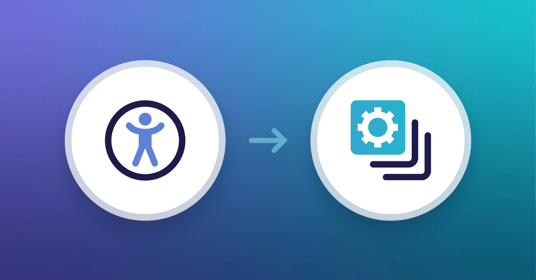Get a Free Trial
Creating, executing, and maintaining reliable tests has never been easier.
A growing share of software development organizations are turning their focus to accessibility testing in an effort to ensure that their products deliver delightful experiences for all users. However, the level of time, talent, and investment needed to successfully adopt accessibility testing often prevents teams from building these capabilities in-house. Instead, organizations turn to external consultants to manage and execute an accessibility testing strategy. While this approach can be an effective solution, and provides legal protection for organizations concerned about meeting regulatory standards, it is costly and doesn’t match the accelerating cadence of deployments happening under DevOps. Mabl’s accessibility testing capabilities lower the barrier to integrating accessibility testing into development pipelines for faster feedback and less reliance on expensive third-party resources.
The Benefits of Reducing Dependency on External Accessibility Testing Partners
While external vendors can help software development organizations supplement their existing expertise and support higher test coverage, there are real costs associated with relying on third-party resources.
- Slower release cadence: An increasing number of software development teams are delivering code on a daily or weekly basis. But when an organization relies on external vendors for any part of their development process, they’re forced to either slow deployment velocity to accommodate the external team, or push code to production without fully checking if the new feature or product meets accessibility standards. If delivery is delayed, organizations risk losing a competitive advantage in the market. But if an app or website is inaccessible, the degraded user experience could potentially turn away customers.
- Software testing gaps: Leading quality teams are improving test coverage and growing their impact on the user experience with comprehensive end-to-end testing, which better reflects the customer perspective by integrating functional and non-functional quality aspects into automated end-to-end testing. When something as critical as accessibility is missing from a team’s software testing strategy, they are more likely to have testing gaps that will degrade the customer experience and impact revenue.
Until recently, software teams had to accept these challenges since accessibility testing required specialized tools and expertise to manage effectively. But low-code test automation has lowered the time and effort needed to start embedding automated accessibility checks into development pipelines as part of their DevOps practice. This allows more development organizations to build better customer experiences at a faster pace - without relying on expensive external resources that introduce friction into development pipelines.
Getting Started with Automated Accessibility Testing in Mabl
Like functional software testing, accessibility testing can be accomplished through manual testing and test automation. Manual accessibility testing, like UX testing and audits, provide important usability data that’s important for a long-term accessibility strategy, but are time-consuming and hard to scale. These types of tests are best performed by external vendors or internal accessibility experts.
To achieve accessibility standards at scale, DevOps teams need automated accessibility checks that can be managed more efficiently in-house. With mabl’s test automation platform, quality professionals can start building a high-velocity, scalable accessibility testing strategy in a matter of days:
- Establish a baseline: mabl makes it possible to embed accessibility test steps into end-to-end tests. Using soft assertions, quality teams can start establishing a baseline to track progress over time, help identify accessibility issues, and introduce accessibility testing to the entire team without impacting releases.
- Create learning workflows: mabl tests run on the entire DOM so they can be optimized to run on large page sets rather than finite user flows. With reusable flows, accessibility experts can write generic automated accessibility tests that are applicable to a wide range of pages, making it easier for developers and testers to reuse the tests. This helps more team members participate in accessibility testing, even if they aren’t experts in the field. Creating well-documented automated tests with customized error messages and links to corresponding documentation also helps build organizational knowledge that reduces the need for external support in the long-term.
- Scale: Once the team has basic accessibility knowledge and workflows established, quality professionals can expand the types of issues that can be identified by automated accessibility testing. In addition to checking WCAG compliance for common issues like a lack of alt descriptions and poor color contrasts, teams can create and run tests built to catch issues for keyboard navigation, for example.
These steps make it possible for software development teams to integrate automated accessibility testing into internal DevOps workflows, reducing their dependence on external vendors and aligning their quality engineering practice with consumer expectations.
Accessibility Testing Improves Software Quality for the Ultimate Competitive Advantage
DevOps is enabling teams to build and ship software faster than ever before, but unless quality is an integral part of that innovation, fast-moving software teams won’t be able to reach the full potential of DevOps. Breaking down the barrier to additional types of testing ensures that companies can maintain quality customer experiences without relying on costly consultants or slowing down development pipelines. In the case of leading photography platform SmugMug, a small software testing team was able to start getting value out of automated accessibility checks in just 10 minutes, which allowed them to scale even as their organization shifted towards continuous deployment.
Get started with low-code accessibility testing as part of mabl’s 2-week free trial.





